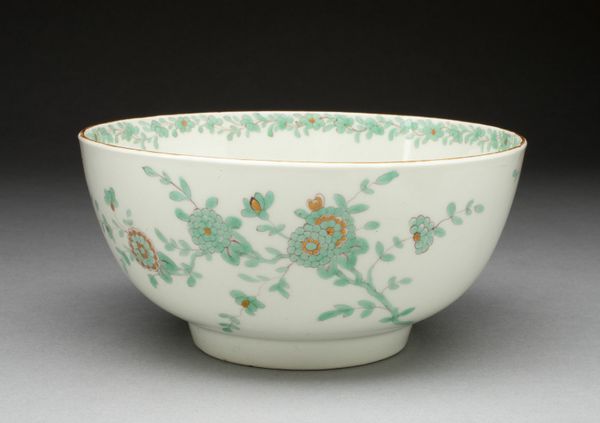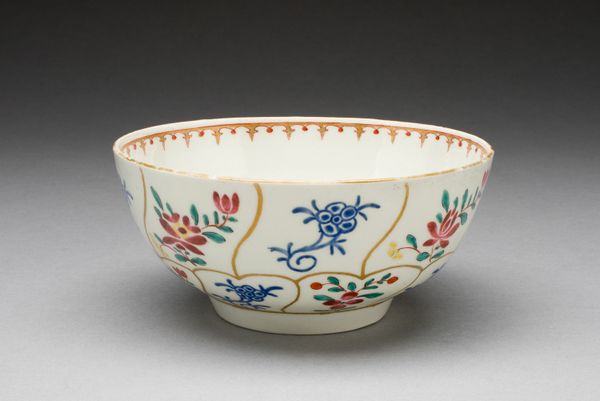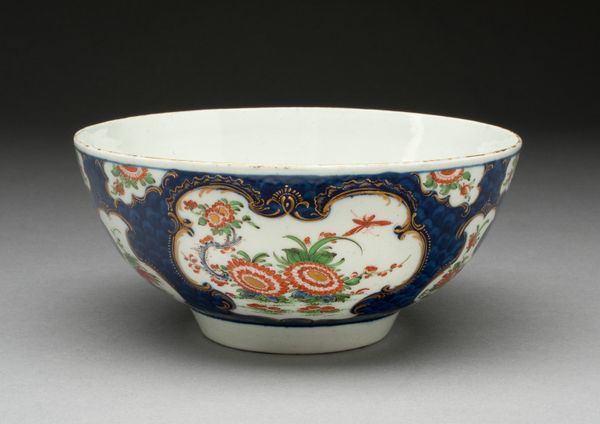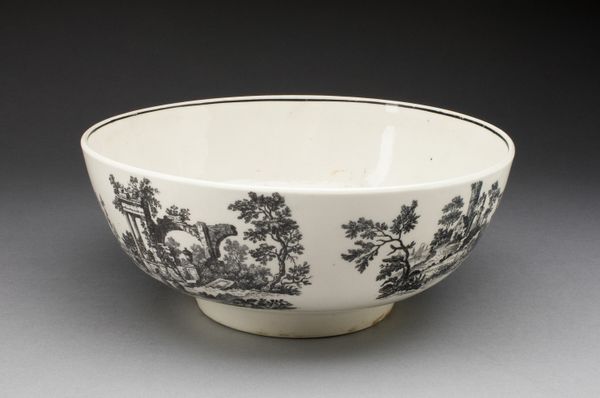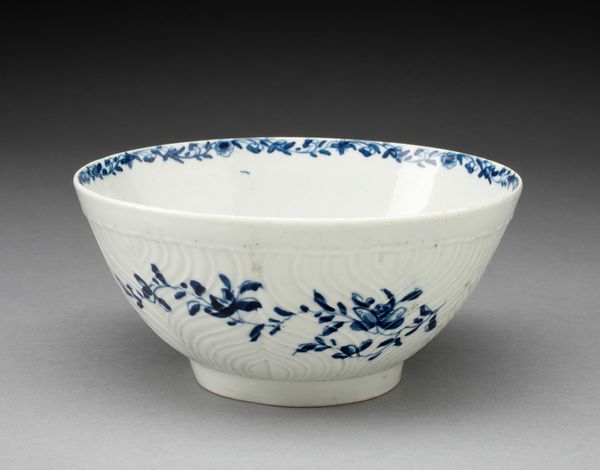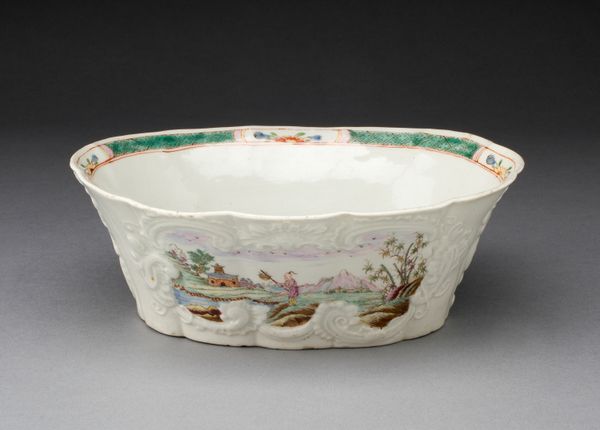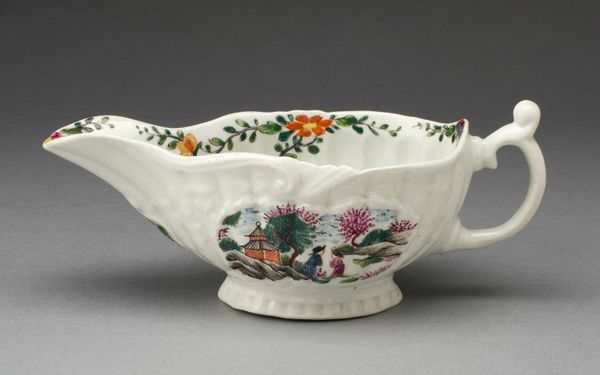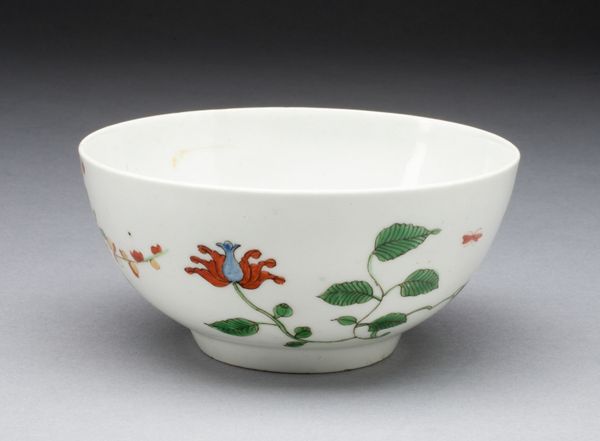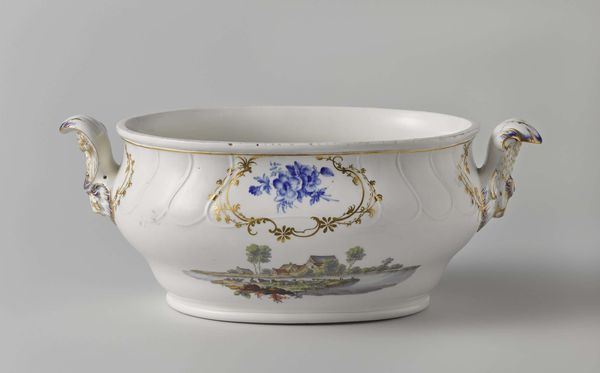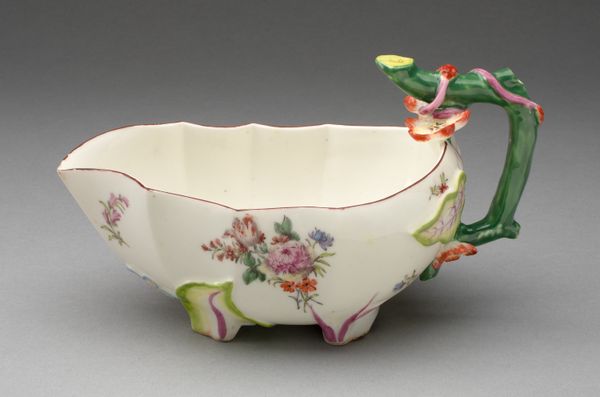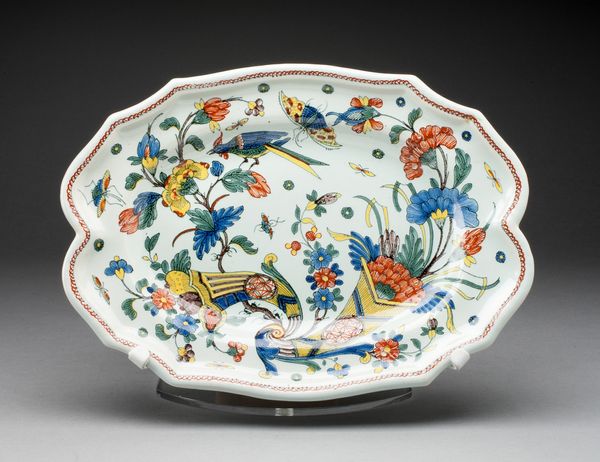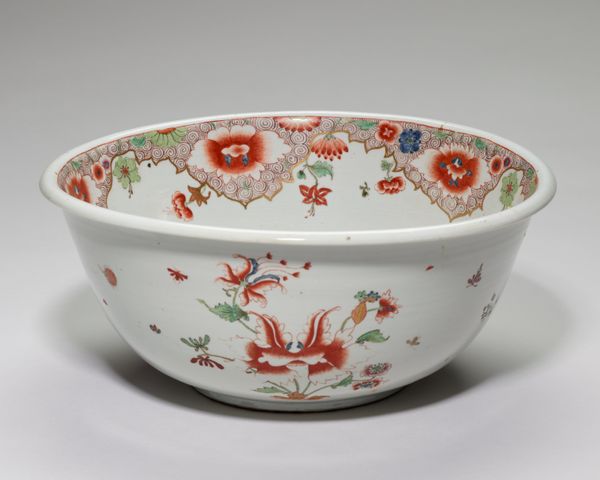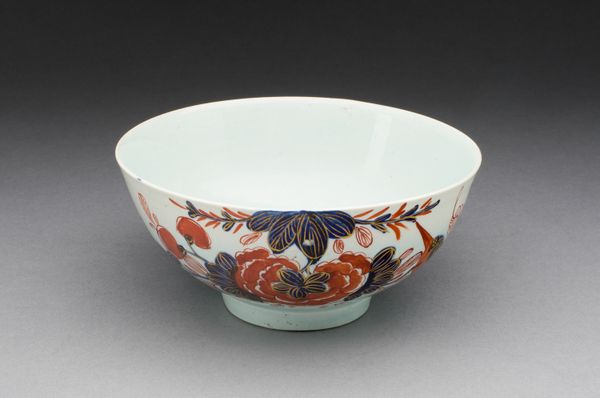
painting, ceramic, porcelain, inorganic-material
#
painting
#
asian-art
#
ceramic
#
porcelain
#
inorganic-material
#
ceramic
#
decorative-art
Dimensions: H. 8.6 cm (3 3/8 in.); diam. 17.8 cm (7 in.)
Copyright: Public Domain
Curator: This octagonal porcelain bowl, created around 1732 by the Meissen Porcelain Manufactory, immediately strikes me with its delicate balance between functionality and ornamentation. The subtle gold trim outlining its angular edges offers a touch of refinement. Editor: Yes, there's something quietly assertive about it. The shape feels almost modern, but the hand-painted floral motifs soften the geometry and bring to mind an aristocratic nostalgia. What are the socio-political contexts that led to the creation of such delicate object? Curator: Well, Meissen was Europe's first producer of hard-paste porcelain, and pieces like this represented status and wealth in a time of evolving social hierarchies. Beyond status though, notice how the painted blossoms -- particularly chrysanthemums -- draw upon older visual traditions from East Asia. This wasn’t simply about European craftsmanship; it was also about adopting and adapting powerful symbolic languages. The act of owning an object of porcelain itself suggests participating in larger stories about the luxury of trade, imperial exploitation, or the development of capitalist modernity. Editor: You're right to point out the cultural appropriation embedded in these objects. These depictions are rendered using a style which reflects European perceptions, further reinforcing that imbalance. But I also wonder about the position of women, during that time period: how this aesthetic resonated with and was shaped by powerful aristocratic women. I wonder how porcelain objects figured into their lives in symbolic ways? Curator: An excellent point! For many elite women, artistic refinement and owning collections became an arena to enact their personal and political lives within a society of limited power for women. Consider the flowers themselves. What is emphasized or omitted in their display of beauty, decay, or reproductive potential and is this tied to expectations about women? Editor: Yes, exactly, so maybe on the surface, porcelain seems rather benign and quiet. But once we begin unpacking it, we actually can unearth all these threads concerning culture, history, power, and status that reflect and reproduce various social imbalances that resonate even now. Curator: Exactly. Even today, our reactions to this bowl are coloured by centuries of artistic and cultural exchange. The persistence of the motifs speaks volumes. Editor: Indeed, this bowl shows us that the past is always present in material culture, informing our relationships and understanding of our societies and art.
Comments
No comments
Be the first to comment and join the conversation on the ultimate creative platform.
